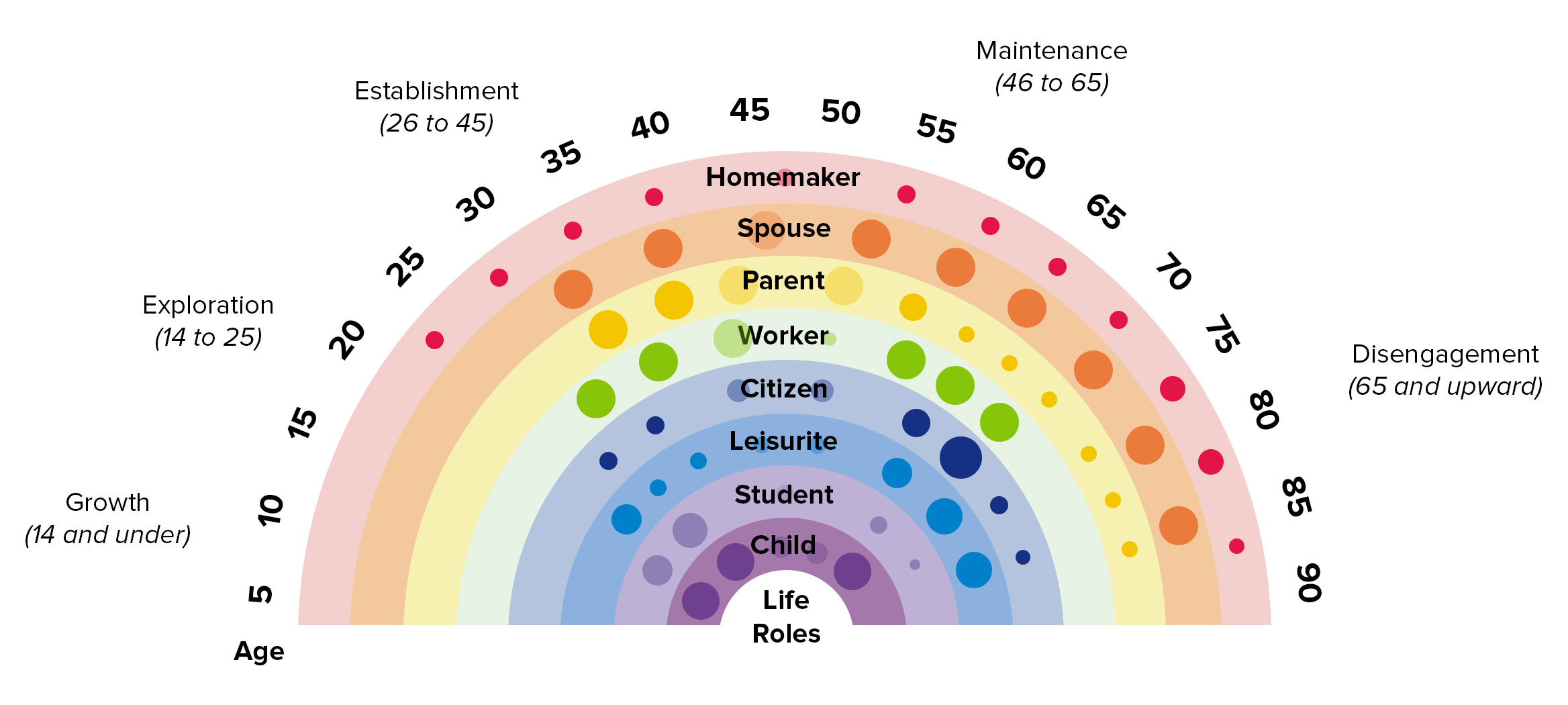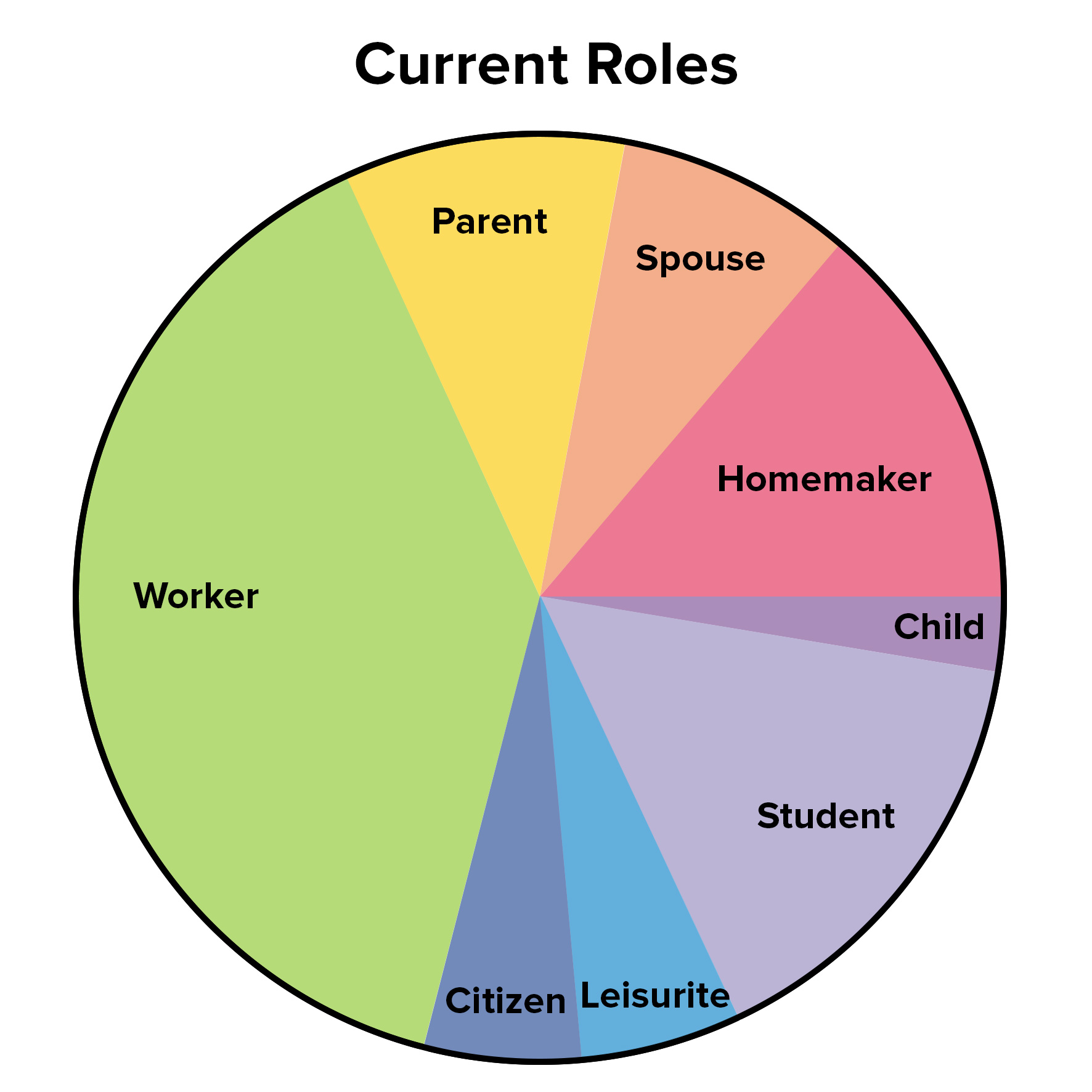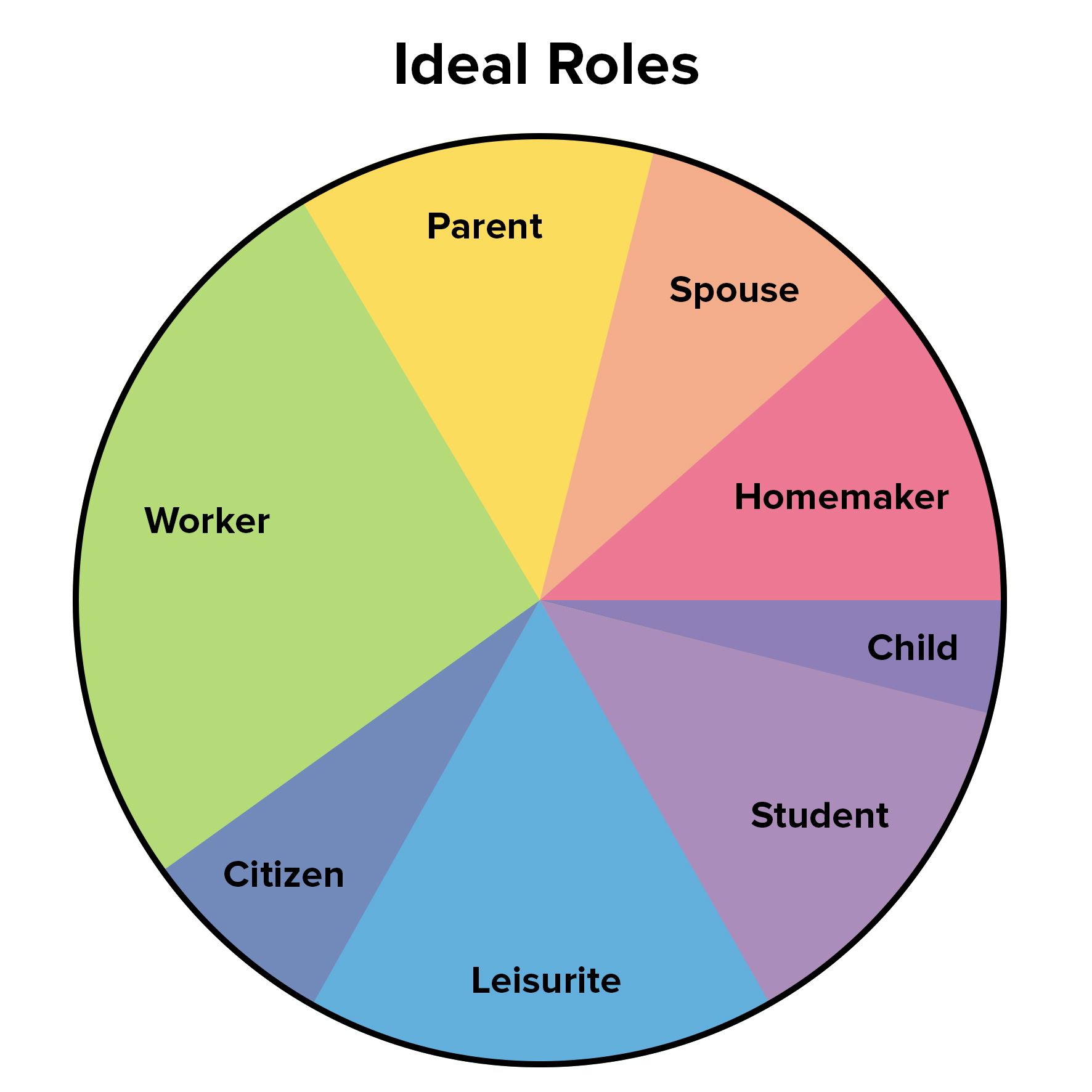The Life Career Rainbow
Finding a Work-Life Balance That Suits You

© GettyImages
clubfoto
Find the right recipe for a varied and fulfilling life.
We all move through different stages in our lives and our careers. And, just as demands on our time in our personal lives vary, so do demands at work.
When demand is high in one area but low in another, life and work can be more enjoyable and more fulfilling. But, when demands are high in both areas, we may become overstretched, stressed or dissatisfied. That's why it's vital to find the right work-life balance.
The Life Career Rainbow can help you to achieve this. In this article, we explore how you can use the tool to maintain balance at each stage of your life and career.
Understanding the Life Career Rainbow Model
The Life Career Rainbow was devised by psychologist Donald E. Super. He wrote his defining book, "The Psychology of Careers," in 1957, and modified his ideas in 1980 to address different career development paths. We've adapted Super's work further, to take account of today's more complex work patterns.
Super's Life Career Rainbow helps you to think about the different roles that you play at different times in your life. In figure 1, below, age and "life stage" (see Life Stages, below) are shown around the edge of the rainbow. "Life roles" are represented by the colored bands, and the time taken up by each role is indicated by the size of the dots in that band.
Note:
The Life Career Rainbow shown in figure 1 is for illustrative purposes only, and may not reflect your own life and career. You can adapt it to represent your circumstances using the template on our free, downloadable Life Career Rainbow Worksheet.
Figure 1: The Life Career Rainbow

Reprinted by permission of Elsevier. From D. E. Super. (1980). 'A Life-Span, Life-Space Approach to Career Development,' Journal of Vocational Behavior, 16(3), 282-298. Copyright © 1980 by Elsevier; all rights reserved.
Eight Life Roles
Let's look at Super's life roles in more detail – this will enable you to produce a more accurate Life Career Rainbow of your own. (Note that there are no gender associations with any of these roles.)
The eight roles are:
1. Child – the time and energy that you use relating to your parents. The role begins at birth and continues until both of your parents are deceased. You spend a lot of time in this role early on in your life. After that, it tends to decrease until your 50s or 60s, when there's often a surge in the time and attention that you spend caring for elderly parents.
2. Student – you may become a student as early as three or four years old (depending on your nationality and culture) and continue until at least the age of 16, although it's increasingly common in many countries to keep studying into your 20s. More and more people now pursue career training or further education throughout their lives.
3. Leisurite – this word was invented by Super to describe the time that you spend on leisure activities. Many people have more leisure time when they're children or adolescents, and after they've retired.
4. Citizen – the time and energy that you devote to working for the community, or in unpaid volunteer work. People often engage in this as their children get older and they have more free time.
5. Worker – the time and energy that you spend in paid employment.
6. Parent – the time and energy that you use raising and caring for children. The role is usually significant until children reach their mid-teens, but many grown-up children stay at home during higher education, or move back home as adults, so it may well continue for longer.
7. Spouse – the time and energy that you spend in a committed relationship.
8. Homemaker – the time and energy that you use to maintain your home life: cooking, cleaning, repairing, and shopping, for example. This role typically starts when you leave the home where you were raised and make a new home for yourself.
Life Stages
When Super developed his model, people in industrialized countries generally moved through five clear "life stages." In particular, the middle part of life was taken up with the intense and often conflicting activities of hard work and parenting, with relatively little time dedicated to leisure.
Today, careers often follow less predictable patterns. In your own Life Career Rainbow you can adjust the "typical" age ranges and stages listed below to fit the pattern of your life. Or, if you prefer, you can leave them out entirely.
Super's life stages are:
1. Growth (ages 14 and under). This stage focuses on physical growth. It is a time when you begin to form ideas about your self-worth, and discover your interests, talents and abilities.
2. Exploration (ages 14 to 25). This is when you learn about the types of work available, and what is required to be successful in different careers. As you learn, you grow more committed to certain choices and narrow down the options that you want to pursue.
Near the end of this stage you may have analyzed your career options, taking into account your personal skills, talents and interests, and your career expectations (salary, hours, benefits, and opportunities for advancement, for instance.)
However, at this point your future direction isn't always clear. You may try a career and find that it doesn't suit you. Or, you may work in the gig economy, and explore several different types of work. So, while your first experience of exploration usually happens between the ages of 14 and 25, you'll likely return to this stage later in your life as you rethink your choices.
3. Establishment (ages 26 to 45). This life stage starts as people settle into their chosen careers and become productive members of society. It is often characterized by increased responsibility and personal satisfaction, but sometimes by issues such as the mid-career slump and mid-life crisis, too.
4. Maintenance (ages 46 to 65). At this stage, you're likely maintaining your existing career and taking part in career development activities that keep you up to date in your job. However, as many jobs become less secure, this stage is less common than it was when Super developed his model.
5. Disengagement (ages 65 and upward). Here, you may choose to slow down and retire from your career, if you are able to do so. Your emphasis moves away from paid work and leaves you with more time for other roles, such as Leisurite, Homemaker and Citizen.
How to Find a Better Work-Life Balance
You can use the Life Career Rainbow to think about your work-life balance now, and in the future, with the aid of three pie charts.
The first pie chart represents your current work-life balance. The second shows what your ideal work-life balance would be, right now. And the third shows what your ideal balance would be in five years' time.
Start by downloading the free Life Career Rainbow Worksheet. Then, work through the five steps, below.
1. Draw Your Current Work-Life Balance Pie Chart
Using the first blank pie chart on your worksheet, mark out the time that you currently spend in the eight different life roles. (If you're not sure, conducting a DILO Analysis can be useful.)
Try to be objective. It's easy to let emotion cloud your judgment, and to think that you routinely spend more time on less enjoyable roles than you actually do.
Your completed pie chart may look something like the example in figure 2, below.
Figure 2 – Example Current Work-Life Balance Pie Chart

2. Develop Your Ideal Work-Life Balance Pie Chart
Now, let's move on to the second pie chart on your worksheet.
Refer back to the Life Career Rainbow in figure 1 as a guide. Then, divide up the second blank pie chart into the proportions of time that represent your ideal scenario, or your "best life." Take time to reflect on your values, the people and activities that are most important to you, and the things that make you happy or unhappy.
For example, if you place a high value on professional achievement, you may wish to spend more time in the Worker role. If your main priority is nurturing your family, you'll more likely emphasize the Parent or Spouse role. Or, if you want to spend more time on your interests outside of work, you may enlarge the Leisurite portion of the chart, as in the example in figure 3, below.
Figure 3 – Example Ideal Work-Life Balance Pie Chart

3. Consider Your Ideal Work-Life Balance in Five Years' Time
Again, look back at the Life Career Rainbow, and think about the changes that you can reasonably expect to happen in your life. Then, think about how you would ideally like your life to unfold.
Divide up the third blank pie chart on your worksheet to show the amount of time that you'd like to be spending in each role in five years' time.
4. Identify Barriers and Challenges
Compare your "ideal" charts from steps 2 and 3 with the "current" chart from step 1. Look at the differences between them, and consider what the causes of these discrepancies might be.
For example, have you developed bad habits, become complacent, or allowed yourself to be swept along by events, with no clear goals in mind? What is preventing you from achieving your ideal work-life balance?
5. Set Life and Career Goals
Finally, identify the strategies that will enable you to overcome the barriers that you identified in step 4, and to achieve your ideal work-life balance.
Set personal goals that will allow you to move from your current state to your desired state, making sure that they are realistic and achievable. You can also develop these goals into an Action Program, to keep you on track.
And be aware of any trade-offs that will result from the change. For example, if your priority is to raise children and be a great parent, you may need to accept the fact that you likely won't earn as much over the next five years as your more career-focused peers.
And finally, remember that goals can shift as your circumstances change, or as you move through the life stages. You can return to the Life Career Rainbow and reassess your priorities as often as you like.
Key Points
Finding the right balance between your career and your personal life can make you happier, more successful and more fulfilled, and prevent you from becoming stressed or overloaded.
The Life Career Rainbow identifies eight roles that we play throughout our lives – Child, Student, Leisurite, Citizen, Worker, Parent, Spouse, and Homemaker – and five "life stages" during which we devote more or less time to each role.
You can use the Rainbow to compare the amount of time that you currently spend in each of these roles with the amount of time that you ideally want to spend on them, at each stage of your life.
This allows you to see clearly where the balance needs to change, and to devise strategies for making that change happen.
This site teaches you the skills you need for a happy and successful career; and this is just one of many tools and resources that you'll find here at Mind Tools. Subscribe to our free newsletter, or join the Mind Tools Club and really supercharge your career!






Thank you for seeking permission to cite this article. We really appreciate it. Our resources are not dated. It is permissible to cite an article without a date. Check the style manual recommended by your teacher/professor or school for the correct format. To learn how to cite an article from Mind Tools, please visit our Permissions Help Desk. You can find it here:
https://www.mindtools.com/community/Permissions
Good luck with your assignment.
Michele
Mind Tools Team
Thank you for sharing your experience with the article.
BillT
Mind Tools Team